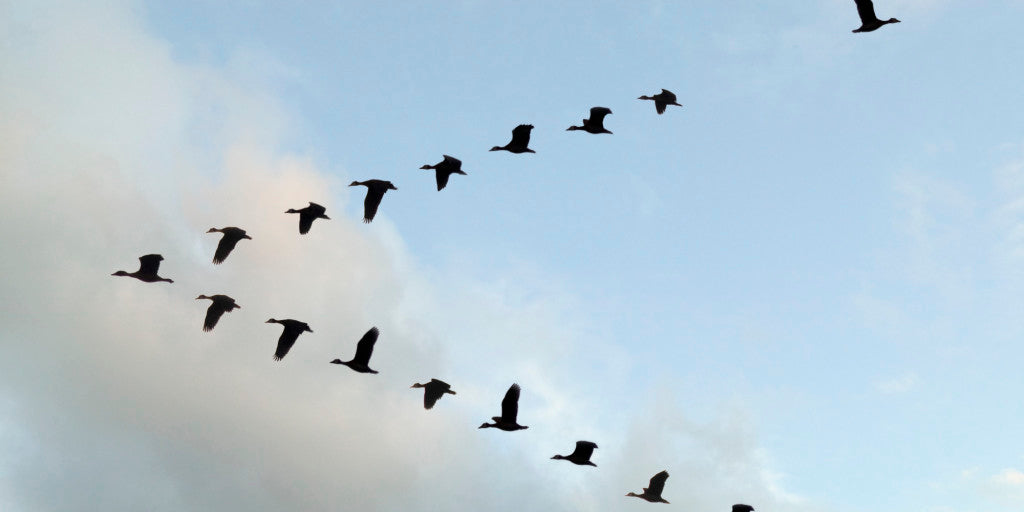Offer
Provide additional details about the offer you're running.
Provide additional details about the offer you're running.
Provide additional details about the offer you're running.

It has long been thought that species of birds that fly in a “V” formation have done so for one reason: to conserve energy. But there has been little written about the exact specifics and reasons why in fact it aids them in saving energy.
A study done this year, however, has demonstrated some new and intriguing evidence that more clearly displays why in fact some species fly in a “V”. Researchers at the Royal Veterinary College in London reported that they have found that birds flying in a “V” shape flap their wings at precise times to reap the benefits of the lift provided by the bird out front.
The researchers studied a flock of 14 juvenile northern bald ibises as they embarked on their migratory journey from Austria to Italy. Each member of the flock carried a specially-designed data logger equipped with a GPS to track the flight position along with the timing of the bird’s wing flaps.
Their findings led them to relate the “V” formation to that of a large aircraft, moving its wings up and down depending on the incoming winds. They found that when a bird flew directly behind another the timing of their wing flapping reversed, minimizing the effects of the downdraft coming from the back of the bird's body.
For years, scientists and researchers did not think this to be possible as it was noted that this feat requires extreme coordination, careful flight and constant awareness of the birds around them. How exactly birds complete these tasks in tandem still remains somewhat of a mystery, as they are unaware of the birds, in fact, are able to locate an aerodynamically pleasing location, but they do conclude that the birds are able to effectively align themselves by sight and through the sensing of air currents through their feathers.
The researchers compiled a video located below:
High Quality Blend